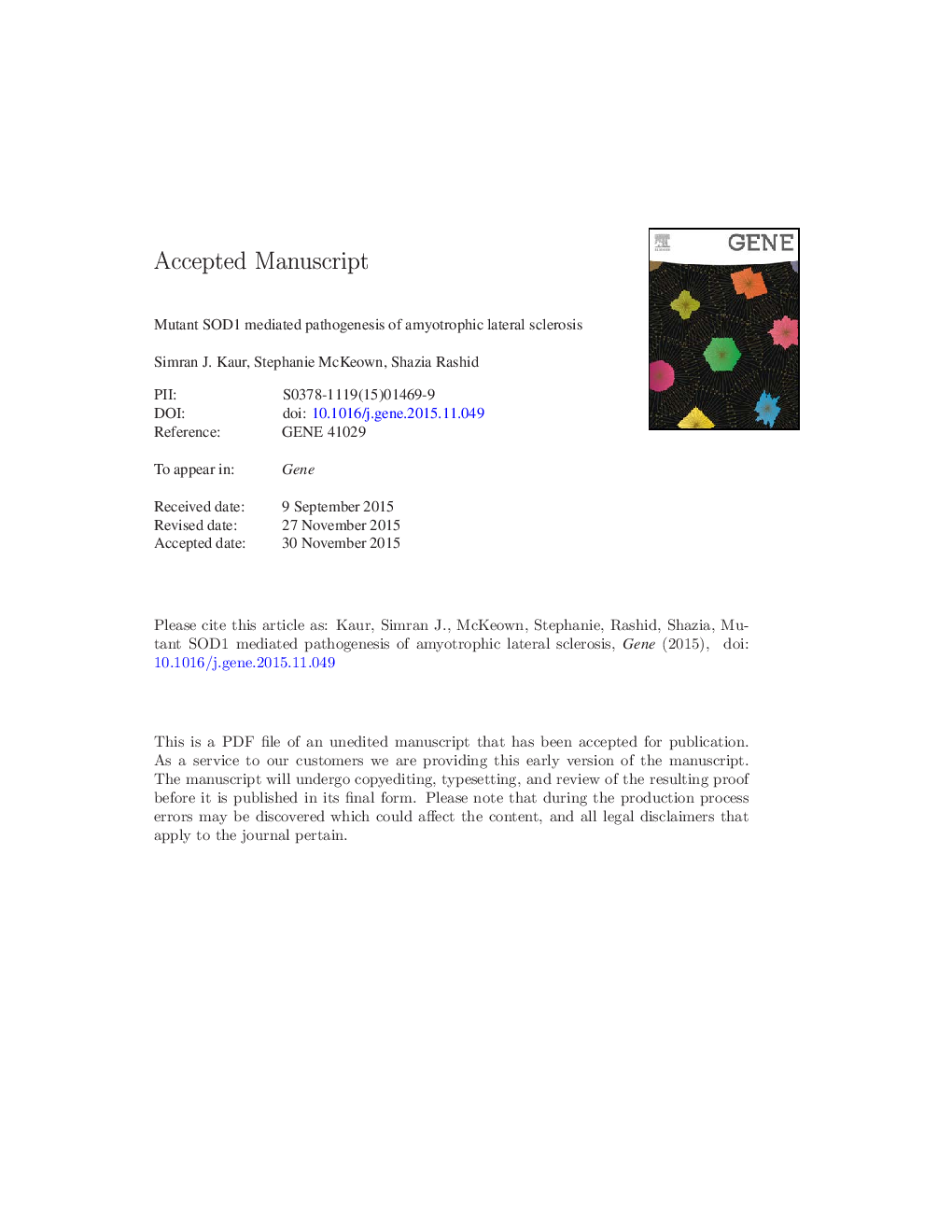| Article ID | Journal | Published Year | Pages | File Type |
|---|---|---|---|---|
| 5905231 | Gene | 2016 | 30 Pages |
Abstract
Amyotrophic lateral sclerosis (ALS) is a neural disorder that causes death of the motor neurons in the brain and spinal cord; this affects the voluntary muscles and gradually leads to paralysis of the whole body. Most ALS cases are sporadic, though about 5-10% are familial. ALS is caused by multiple factors including mutation in any one of a number of specific genes, one of the most frequently affected is superoxide dismutase (SOD) 1. Alterations in SOD 1 have been linked with several variants of familial ALS. SOD 1 is a powerful antioxidant enzyme that protects cells from the damaging effects of superoxide radicals. The enzyme binds both copper and zinc ions that are directly involved in the deactivation of toxic superoxide radicals. Mutated SOD1 gene can acquire both gain and loss of function mutations. The most commonly identified mutations in SOD1 that affect protein activity are D90A, A4V and G93A. Deleterious mutations have been shown to modify SOD1 activity, which leads to the accumulation of highly toxic hydroxyl radicals. Accumulation of these free radicals causes degradation of both nuclear and mitochondrial DNA and protein misfolding, features which can be used as pathological indicators associated with ALS. Numerous clinical trials have been carried out over last few years with limited success. In some patients advanced techniques like gene and stem cell therapy have been trialed. However no definitive treatment option can provide a cure and currently ALS is managed by drugs and other supportive therapies. Consequently there is a need to identify new approaches for treatment of this ultimately fatal disease.
Keywords
Upper motor neuronsEndoplasmic Reticulum-Golgi intermediate compartmenttdp43ERGICRXRRetinoid X receptormRNASOD1AAVC9orf72familial ALSFUsO2−Hydrogen peroxideAdenosine TriphosphateATP superoxide anionamyotrophic lateral sclerosisOxygenALSTarNeurodegenerationmutationsmessenger ribonucleic acidSODLower motor neuronsH2O2Adeno-associated virusestar DNA-binding protein 43chromosome 9 open reading frame 72
Related Topics
Life Sciences
Biochemistry, Genetics and Molecular Biology
Genetics
Authors
Simran J. Kaur, Stephanie R. McKeown, Shazia Rashid,
